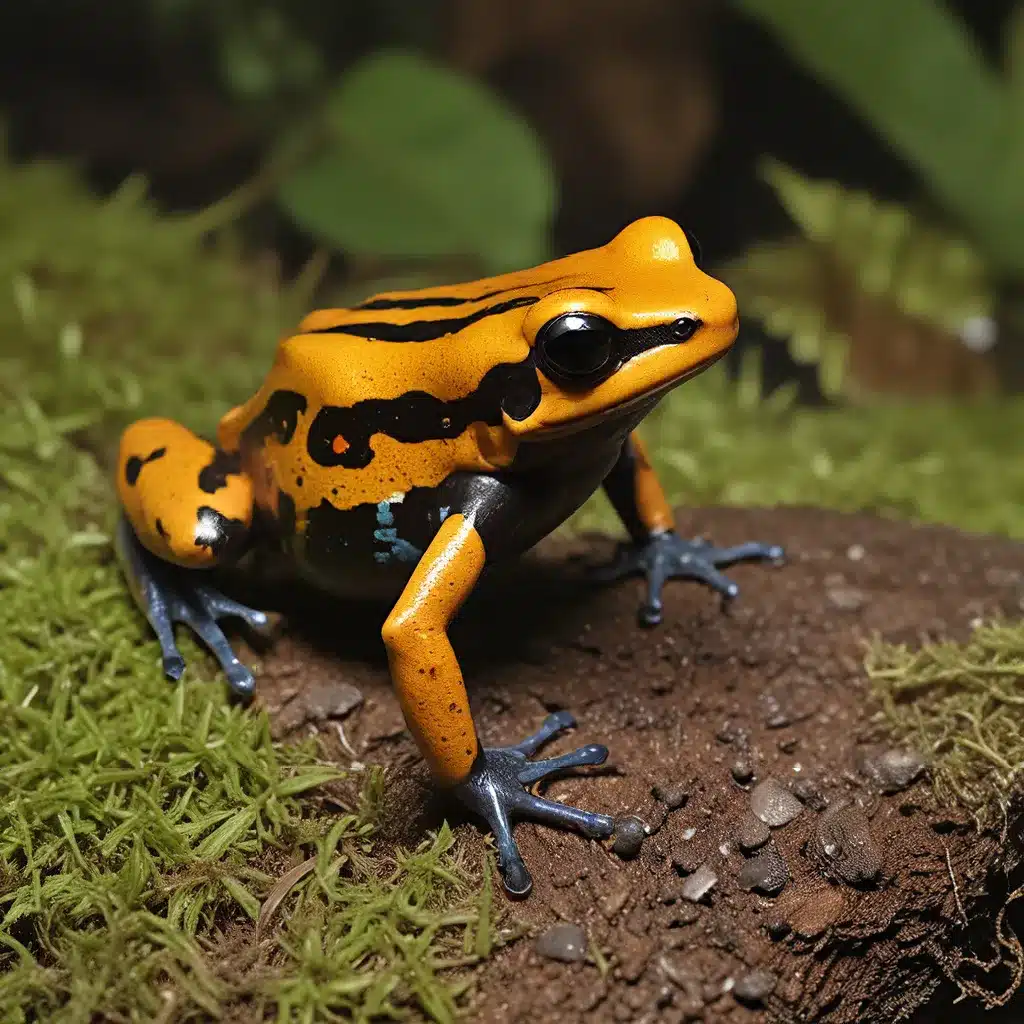
The Captivating Conundrum of the Colorful Amphibian
Have you ever gazed upon the vibrant hues of a poison dart frog and wondered what secrets lay beneath that mesmerizing exterior? These diminutive amphibians possess a certain je ne sais quoi that has captivated scientists and nature enthusiasts alike. But make no mistake – their alluring appearance is merely the tip of the iceberg when it comes to the extraordinary adaptations that allow these remarkable creatures to thrive.
Toxicity Trumps All
Let’s start with the most well-known superpower of the poison dart frog: its potent toxicity. These frogs produce some of the most lethal substances known to man, with certain species capable of delivering a dose powerful enough to kill up to 10 adult humans. But how do they do it?
It turns out that the poison dart frog’s toxicity is directly linked to its diet. In their native habitats of Central and South America, these frogs feed primarily on small insects and arthropods that have accumulated toxic chemicals from the plants they consume. As the frogs ingest these toxin-laced prey, the chemicals become sequestered in the frog’s skin, creating a formidable chemical defense against would-be predators.
Researchers have identified over 500 different alkaloid compounds that can be found in the skin of various poison dart frog species, each with its own unique molecular structure and potency. And the frogs’ ability to store and concentrate these toxins is truly remarkable – some species can pack enough poison to make over 100 lethal darts for blow guns!
But the poison dart frog’s toxicity doesn’t just serve as a deterrent. It also plays a crucial role in the frog’s reproductive success. Male frogs use their vibrant colors to attract mates, and the toxicity of their skin signals to potential partners that they are healthy, fit, and able to provide protection for their offspring. Talk about a win-win situation!
Camouflage, Contortions, and Curiosity
While the poison dart frog’s toxicity is undoubtedly its most famous superpower, these amazing amphibians have a few other tricks up their sleeves. Take their remarkable ability to camouflage themselves, for instance. With their mottled patterns and the ability to change color to match their surroundings, poison dart frogs can practically disappear into the dappled light of the forest floor or the lush foliage of their tropical habitats.
But it’s not just their coloration that helps them blend in. Poison dart frogs are also masters of contortion, able to twist and contort their bodies into the most unlikely shapes and positions to evade detection. Some species can even flatten themselves against the ground, becoming almost indistinguishable from the leaf litter and debris that surrounds them.
And if their camouflage and contortions fail, these frogs have one more trick up their sleeve: curiosity. Poison dart frogs are surprisingly inquisitive creatures, often approaching new stimuli with a sense of wonder and exploration. This curious nature can sometimes backfire, as the frogs may inadvertently reveal themselves to predators. But it also allows them to learn about their environments, establish territories, and even recognize individual members of their own species.
The Marvels of Metamorphosis
But the adaptations of the poison dart frog don’t stop there. These fascinating amphibians also undergo a remarkable transformation during their life cycle, undergoing a dramatic metamorphosis from tadpole to adult.
Like other frogs, poison dart tadpoles hatch from eggs and spend the early stages of their lives swimming and feeding in aquatic environments. But as they mature, they undergo a complete transformation, developing legs, shedding their tails, and eventually emerging as the vibrant, terrestrial adults we know and love.
This metamorphosis is no easy feat, and the poison dart frog’s ability to navigate this dramatic change is truly impressive. Not only must the tadpole develop entirely new physiological systems, but it must also adapt to a completely different set of environmental conditions and survival challenges.
And the adaptations don’t stop there. As adults, poison dart frogs must contend with the hazards of the tropical forest floor, where they face everything from predators to the scorching sun. But their unique skin structure, with its intricate network of capillaries and moisture-retaining adaptations, allows them to thrive in these demanding environments.
A Cautionary Tale
While the poison dart frog’s adaptations are undoubtedly impressive, they also serve as a cautionary tale about the fragility of our natural world. These incredible creatures are facing increasing threats from habitat loss, climate change, and the pet trade, with many species now considered endangered or critically endangered.
But there is hope. Organizations like Golden Exotic Pets are working tirelessly to raise awareness and support conservation efforts, helping to protect these amazing amphibians for generations to come.
So, the next time you gaze upon a poison dart frog, take a moment to marvel at the extraordinary adaptations that have allowed these creatures to thrive in their tropical habitats. And consider how you can help ensure that these captivating creatures continue to grace our world with their vibrant colors and incredible superpowers.

